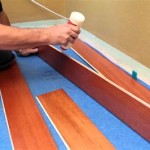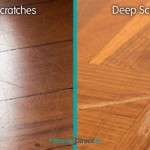How To Estimate Tile Flooring: A Comprehensive Guide
Estimating the amount of tile required for a flooring project is a critical step in ensuring a successful and cost-effective installation. Accurate estimation minimizes waste, prevents project delays, and helps in staying within budget. This article provides a detailed guide on how to accurately estimate tile flooring needs.
The process involves several steps, including measuring the area, accounting for waste, considering tile size and layout, and factoring in extra materials for cuts and potential breakage. Each of these aspects plays a crucial role in determining the final quantity of tiles needed. Neglecting any of these factors can lead to underestimation or overestimation, both of which can negatively impact the project.
Step 1: Measuring the Area Accurately
The foundation of an accurate tile flooring estimate lies in precise measurement of the area to be tiled. Start by sketching a rough outline of the room or area. This sketch doesn't need to be perfectly to scale, but it should accurately represent the shape of the space, including all corners, doorways, and any built-in features like cabinets or islands.
Use a measuring tape to determine the length and width of the area. It is crucial to use accurate measuring tools for this process. For rectangular or square rooms, multiply the length by the width to calculate the area in square feet or square meters, depending on the unit of measurement being used. For example, if the room is 12 feet long and 10 feet wide, the area would be 120 square feet (12 ft x 10 ft = 120 sq ft).
For rooms with irregular shapes, divide the area into smaller, manageable sections like rectangles, squares, or triangles. Measure each section individually and calculate the area of each. The formula for calculating the area of a triangle is ½ * base * height. Once all the individual areas are calculated, add them together to get the total area of the space. This approach ensures that even complex layouts are accurately accounted for.
Document all measurements on the sketch. This detailed record will be invaluable for further calculations and for referring back to during the installation process. Clear and organized measurements are essential to avoid confusion and potential errors later on.
It is essential to measure the area twice to verify the accuracy of the measurements. Discrepancies should be reviewed and resolved before proceeding to the next step. Confirming the measurements reduces the likelihood of miscalculations and unnecessary material purchases.
Step 2: Calculating Waste and Breakage Allowance
Once the total area is determined, it is necessary to factor in an allowance for waste and breakage. Tiles inevitably break during cutting or installation, and some waste is generated when fitting tiles around obstacles or along walls. The amount of waste allowance depends on the complexity of the installation and the layout pattern chosen.
For simple, square or rectangular rooms with a straight-lay tile pattern, a waste factor of 5-10% is generally sufficient. This accounts for minor cuts and the occasional broken tile. However, for more complex layouts such as diagonal patterns, herringbone patterns, or rooms with many angles and curves, a higher waste factor of 15-20% is recommended. These patterns require more cuts and create more waste due to the angles involved.
To calculate the waste allowance, multiply the total area by the waste percentage. For example, if the total area is 120 square feet and the waste allowance is 10%, the waste allowance would be 12 square feet (120 sq ft x 0.10 = 12 sq ft). Add this waste allowance to the total area to get the final area to be tiled, including waste. In this example, the final area would be 132 square feet (120 sq ft + 12 sq ft = 132 sq ft).
Consider the tile material itself when determining the waste allowance. More fragile materials like glass or natural stone may require a higher waste percentage due to their increased susceptibility to breakage. Similarly, if the project involves intricate cuts or mosaics, a higher waste allowance is necessary to account for the complexity of the work.
The extra material also serves as a buffer for future repairs. Having extra tiles from the original batch on hand makes it easier to repair damaged tiles later on without worrying about color variations or discontinuation of the product. This can save time and money in the long run.
Step 3: Determining the Number of Tiles Needed
After calculating the total area and waste allowance, the next step is to determine the number of tiles to purchase. This involves considering the size of the tile and how many tiles are contained within a box or package. Tile sizes vary widely, from small mosaic tiles to large format tiles. Larger tiles will cover more area, thus requiring fewer tiles overall, while smaller tiles will require more tiles to cover the same area.
First, determine the area of a single tile. If the tile is square or rectangular, multiply the length by the width to calculate the area. Ensure that the measurements are in the same units as the area calculation (e.g., square feet or square meters). For example, if a tile is 1 foot long and 1 foot wide, the area of the tile would be 1 square foot.
Divide the total area to be tiled (including waste allowance) by the area of a single tile. The result will be the number of tiles needed to cover the area. For example, if the total area is 132 square feet and the area of a single tile is 1 square foot, then 132 tiles are needed (132 sq ft / 1 sq ft = 132 tiles).
Tiles are often sold in boxes or packages containing a specific number of tiles. Determine how many tiles are in each package. Divide the total number of tiles needed by the number of tiles per package. Round up to the nearest whole number to ensure enough tiles are purchased to complete the project. For example, if each package contains 10 tiles and 132 tiles are needed, then 14 packages should be purchased (132 tiles / 10 tiles/package = 13.2 packages, rounded up to 14 packages).
Consider the grout lines between the tiles when calculating the number of tiles needed. Grout lines take up space and reduce the overall tile coverage. While the effect is less significant with larger tiles, it can be noticeable with smaller tiles. Some tile calculators online allow inputting the grout line width to account for this factor.
It is always advisable to purchase slightly more tiles than estimated, even after accounting for waste and breakage. This provides a safety net in case of unexpected issues during installation or future repairs. An extra box or two can be invaluable in avoiding project delays or the need to purchase additional tiles later, which may not be available in the same batch or color.
Step 4: Accounting for Trim and Special Pieces
In addition to the field tiles that cover the main area, most tile flooring projects require trim pieces to finish edges and transitions. Trim pieces come in various shapes and sizes, including bullnose tiles, quarter rounds, and edge tiles. These pieces are used to create a clean, finished look along walls, countertops, or where the tile meets other flooring materials.
Measure the linear feet of the edges that require trim. This includes the perimeter of the tiled area along walls, around doorways, and any other areas where the tile edge will be exposed. For example, if the room is 12 feet long and 10 feet wide, and trim is needed along all four walls, the total linear footage of trim needed would be 44 feet (2 * 12 ft + 2 * 10 ft = 44 ft).
Trim pieces are typically sold in individual pieces or in lengths. Determine the length of each trim piece and divide the total linear footage needed by the length of each piece. This will give the number of trim pieces needed. Round up to the nearest whole number to ensure enough material is available.
Consider inside and outside corners when estimating trim. Corner pieces are used to create a seamless transition around corners. Count the number of inside and outside corners and purchase the appropriate number of corner pieces. These are available in matching colors and finishes to complement the trim.
Special pieces, such as decorative tiles or accent pieces, can add visual interest to the flooring. If incorporating these elements, plan their placement in advance and determine the number of pieces needed based on the layout. Consider any additional cuts or modifications that may be required for these pieces.
Remember to add a waste factor for trim and special pieces, similar to the field tiles. A waste factor of 10-15% is typically sufficient to account for cuts and potential breakage.
Step 5: Using Online Tile Calculators and Professional Advice
Online tile calculators are valuable tools for estimating tile flooring needs. These calculators typically require inputting the room dimensions, tile size, and waste allowance. They automatically calculate the number of tiles needed and the estimated cost of the project. While online calculators can be helpful, it is essential to verify the results with manual calculations to ensure accuracy.
Consult with a tile professional or flooring contractor for complex projects or when unsure about any aspect of the estimation process. Professionals have experience in estimating tile flooring projects and can provide valuable insights and advice. They can help assess the specific requirements of the project, recommend appropriate materials, and provide accurate estimates.
When seeking professional advice, it is beneficial to provide detailed information about the project, including the floor plan, tile size, layout pattern, and any specific design considerations. This will enable the professional to provide a more accurate and tailored estimate.
Obtain multiple quotes from different suppliers or installers to compare prices and services. This allows for making an informed decision and selecting the best option for the budget and project requirements. Be sure to ask about any hidden fees or additional costs that might not be immediately apparent.
By combining accurate measurements, waste allowance calculations, and professional advice, the tile flooring project becomes more manageable and cost effective. It helps to avoid underestimation or overestimation, ensuring the project is completed efficiently and within budget.

How Do You Calculate The Number Of Tiles Need

Tile Layout Calculator Measure Square Corp

Tile Layout Calculator Measure Square Corp

Tile Layout Calculator Measure Square Corp

How To Estimate The Cost Of Tiling A Room In 7 Steps

How To Find Out The Number Of Tiles Required For A Floor Construction Cost

How To Calculate Floor Tiles Quantity Estimation In English
How To Calculate Tiles Needed For A Floor

Tile Calculator How Many Tiles Do I Need

How To Calculate Floor Tiles Quantity Estimation In English
Related Posts








